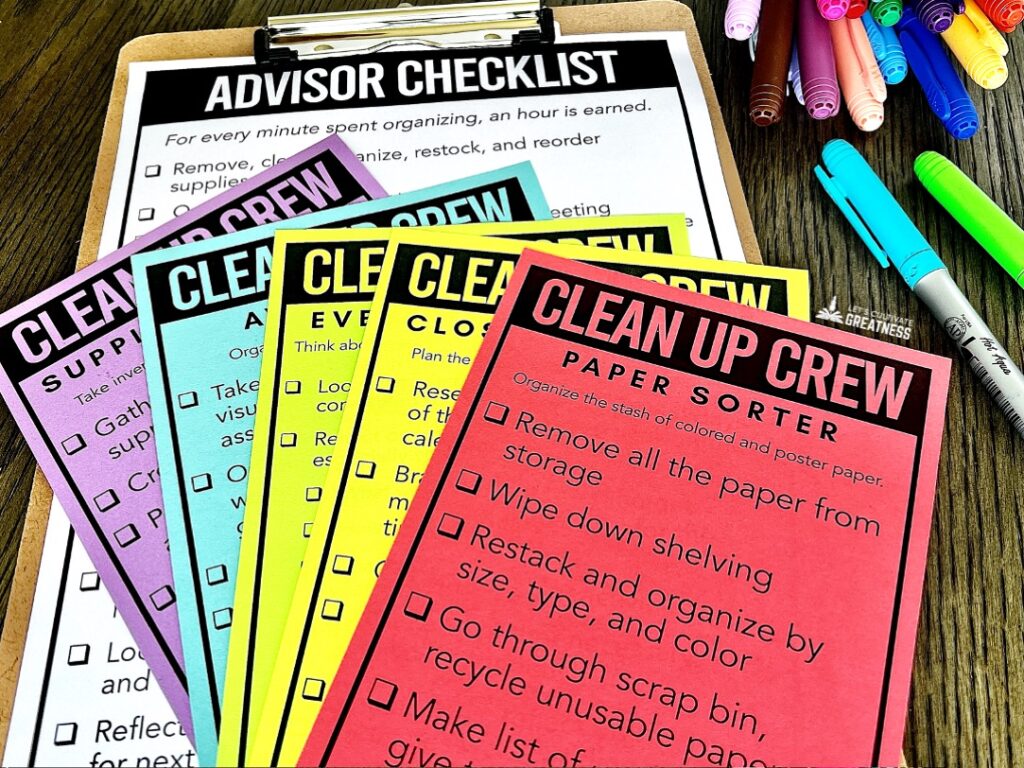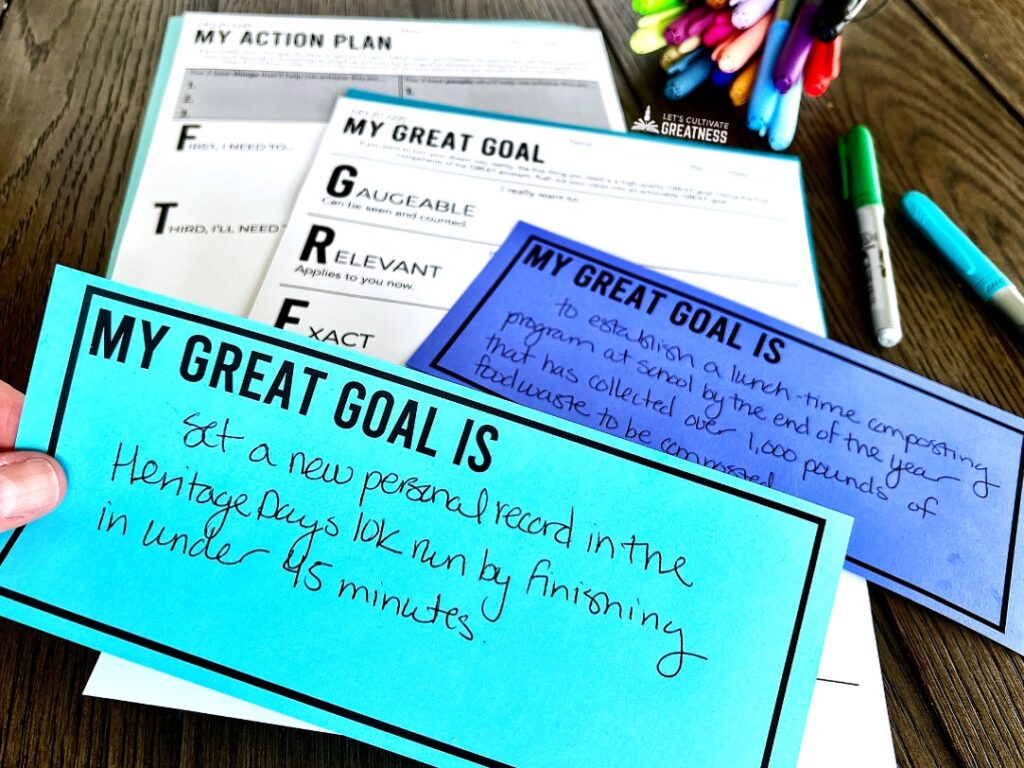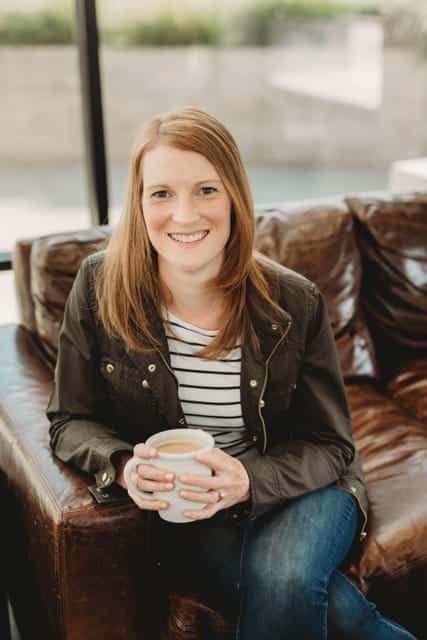Probably my favorite of Stephen Covey’s famous “7 habits of highly effective people” is his last one: sharpening the saw.
It comes from the analogy of being so consumed in cutting down a tree that you don’t pause to sharpen your increasingly dull saw. But recognizing the need to step back for a few minutes to care for your tools allows you to finish the task a lot faster and easier.
Basically, you’re working so hard that you end up making more work for yourself. Which is so easy to do, isn’t it?
Taking a week at the end of first semester or the end of the year to wrap things up is so beneficial to your overall student council or leadership program. And your sanity as advisor!
Let’s be honest, nothing we’re doing in student council is so high stakes that there isn’t time to step back to sharpen our saws. So, use this low-stakes space to teach this super important leadership (and life!) skill.
And I’m not just talking about having a couple kids clean out the paper closet. I’m talking giving each area of your program a little reflection, clean-up, and refresh. It will make your job so much easier moving forward.
So, no matter what time of year it is right now, go pencil down time in December or January, and again May or June, for these must-do activities.
Organize the Student Council Closet
Okay, so it’s not the only thing, but it’s definitely a legitimate one. At the end of the year, but also at the mid-year point, schedule time for your group to clean out and organize your storage closet, cupboards, and supplies.
Notice I didn’t say you.
For me, one of the hardest parts of becoming a student council advisor was the constant mess! Half-finished projects on the counters for tomorrow, wet posters laying out to dry, etc. Every. Single. Day. It’s inevitable. But you also should absolutely not be the one cleaning it up all the time.
Yes, you’ve got to learn to live with a little disarray as an advisor, but at planned intervals your student leaders need to pause for some clean up. My favorite way to do this is by having 2 days on the calendar at the end of first semester and the end of year, plus an additional day at the end of first and third quarter. I hand out these job cards for my students to choose from.

Having all the expectations listed out for each task, students are more independent and can do a much more thorough job. And this means I’m not constantly checking in on them.
Yes, obvious things like deep cleaning the paint shelves get done, but also organizing our digital files, auditing social media accounts, and reflecting on events from the last quarter or semester. Everyone has a responsibility to help.
These clean-up days have been a real game-changer in keeping our space and systems working smoothly.
Reflect on the Year (So Far)
You can do this any number of ways, so think about what outcomes you’re hoping for first.
It could be for individual or group growth, private feedback for you or evidence for grading purposes, analyzing past actions or goal setting for the future. Or maybe some combination of all these things.
I have a whole blog post of meaningful reflection questions for you to ask your Student Council or Leadership students, so here are just a few of them:
What did you become the go-to person for during this semester/year?
What was our biggest win this semester/year?
What’s our biggest challenge right now?
If we had $1,000 to spend on anything for our school, what should it be?
What’s a recurring task that we need to improve upon?
Foster Goal Setting
This one is perfect for the mid-point of the year. Spend time right at that semester switch working on goal setting. I make this a formal thing to convey the importance of their goals and the intention in the work to achieve them.
This GREAT goal setting kit walks students step-by-step in reflecting, brainstorming, committing to, and following up with a goal over the course of several weeks or months.
My favorite part of this framework is having students write letters to themselves to read in the future about staying focused on their goal. We also declare our goals on paper “bricks” to post on the wall, creating a sense of building a foundation and community with our goals.

I hand students their letters back around the end of quarter 3 along with some science-backed tips about forming and keeping habits that’ll help them work towards their goal.
Write Thank You Cards
One of my job cards is thinking back over the events from the last semester as well as looking at the semester as whole and writing any overdue or missed thank you cards.
After events, one of our priorities is getting thank you cards out to everyone who helped us, but I still like my kids to use this time to double-check that we didn’t miss anyone. The end of the semester and year are also perfect times to send notes to people who help your program every day—secretaries, custodians, tech people, administrators, etc.
If you have a lot to write, hold a whole-group mini lesson first (here’s the kit I use for that). If it’s just a few, then it’s a great task for a couple students to handle.
Expressing gratitude is a core component of the service-driven program I’ve created with my students. Check out this blog post to begin implementing a service leadership approach with your student council.
Review Your Calendar
Use this time to take a zoomed-out look at the whole semester or year and ask larger questions that don’t get often get asked in the thick of things.
Some questions to consider are:
Were some weeks or months overbooked? Others under-booked?
Should any events have taken place another time/day? Did they work well when they happened?
Is there anything we should swap the order of or move to earlier or later in the year?
What great ideas did we have but didn’t get to; should they be written down for next year?
Then, importantly, jot down these ideas somewhere so you’ll have them available to incorporate next year! If you want more tips for an organized year, check out my post all about start-of-the-year calendar planning tips.
Conduct a SWOT Analysis
This corporate-world protocol is likely popular because it’s so simple and to the point. It stands for Strengths, Weaknesses, Opportunities, and Threats.
This works best as a whole-class activity at the mid-point of the year, so students can act on the things they brainstormed with the rest of the year. You can also use it at the end of the year with your newly sworn-in officers to get a solid head start .
First, ask your students to reflect on the strengths and weaknesses of the group, especially in reflection of how the first semester went. These two components focus on internal reflection.
Second, ask them to look at external things like the current school climate and the upcoming semester or year. Think about opportunities to take advantage of and concerns, or “threats,” to consider. These could be upcoming school or community events, any recent changes, ongoing issues, new ideas, etc.
This is a great activity to do along with reviewing your calendar and before delivering any sort of State of the School.
Deliver a State of the School
After doing a SWOT analysis with your whole Leadership or student council group, sit down with your president to further reflect on the year so far and develop goals for the time remaining. Then, have him or her deliver a State of the School address.
It can be as formal or informal as you’d like. He or she could submit a written reflection or give a brief presentation to your principal or school board, share a few things at a staff meeting, or even make a funny video to show at the next assembly.
Regardless of the format, a good State of the… anything answers these 3 questions:
What have we accomplished so far?
What have we learned about ourselves?
What are we looking forward to?
You can even have each year’s president pick how they want to deliver their address, so it’s as unique as their leadership style.
Hopefully these ideas give you lots of options for stepping back to strengthen your program. You’ll see such a difference the very next semester or year in how much more smoothly everything runs.
If you are looking for a few more practical planning and organizing tools as a StuCo advisor, check out my StuCo Starter Kit. Also, be sure to browse the rest of my student council blog posts for more tips and advice to get you through the whole year.
Feature image credit: Greg Rosenke








